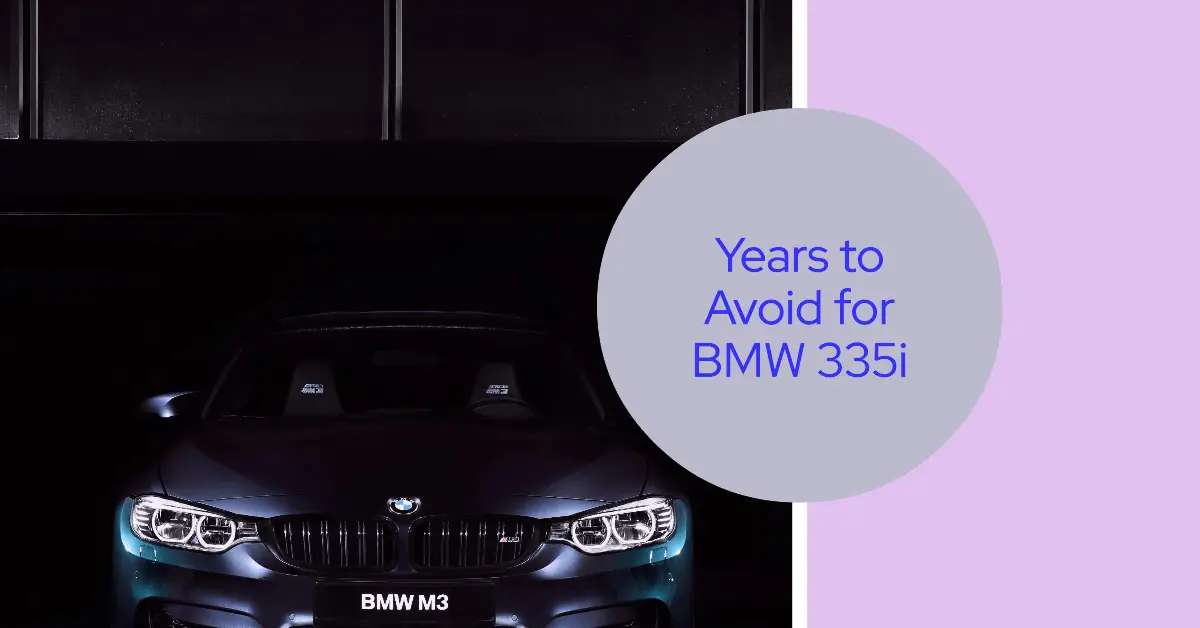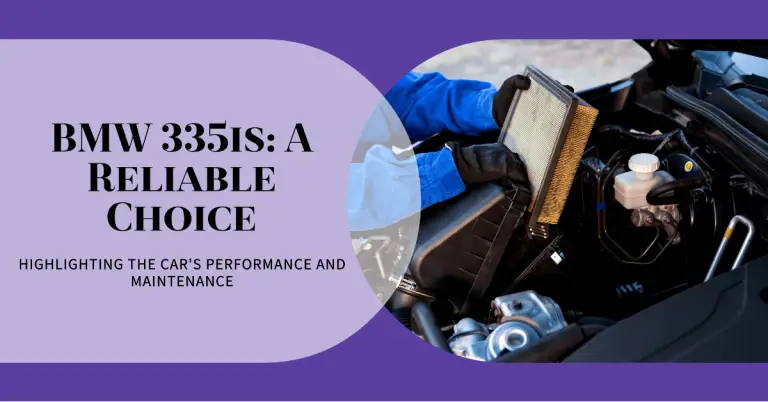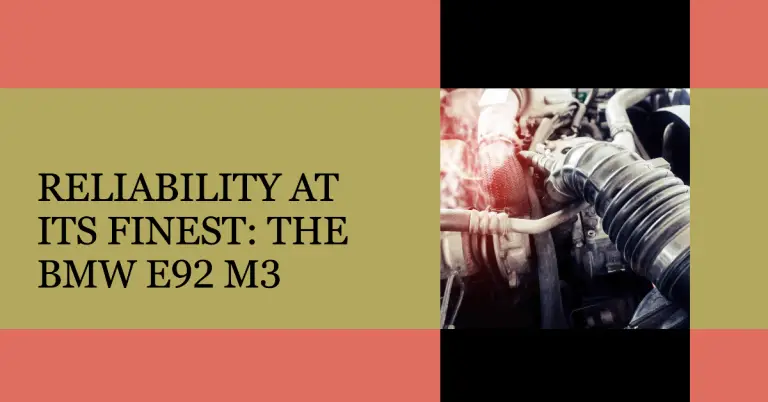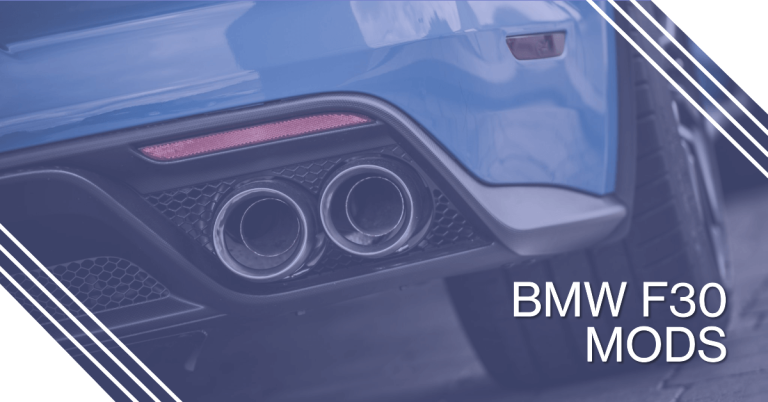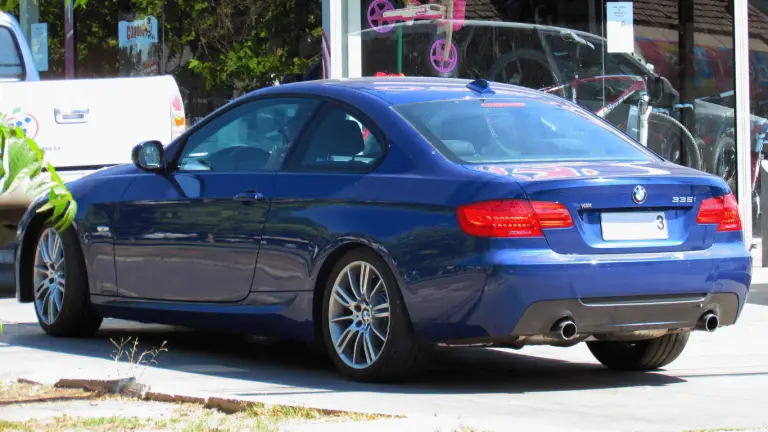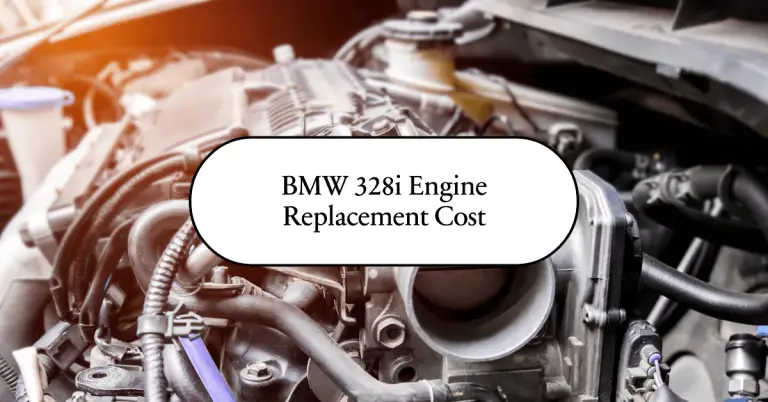BMW 335i: Years to Avoid for a Smoother Ride
So you’re in the market for a used BMW 335i. Smart move – the 335i is one of the most fun-to-drive sedans BMW has ever made. Packing a powerful 300+ hp twin-turbo straight 6-cylinder engine, the 335i offers exhilarating performance and handling. However, not all model years of the 335i are created equal when it comes to reliability and ownership costs.
Some model years of the BMW 335i have serious and expensive issues – while others are pretty solid. So which years should you avoid when shopping for a used 335i in order to have the smoothest ownership experience possible?
The short answer is: Avoid the 2007-2010 335i at all costs, along with the AWD xDrive models. Opt for a 2011+ if possible, with 2012 being the ideal year for the best used 335i.
In this detailed guide, we’ll cover:
- An overview of the BMW 335i – what years were made and key specs
- The problematic early 335i models and recurring issues to look out for
- Which model years had the fewest problems
- Our picks for the best used BMW 335i years to buy
- 335i maintenance costs, repairs, and things to inspect when buying used
Let’s take an in-depth look at the history of the BMW 335i and identify the troublesome years that are best avoided…
Overview of the BMW 335i: Generations and Timeline
The sporty BMW 335i was in production for two generations spanning model years 2006 to 2013:
First Generation – E90 Chassis (2006-2011)
The first generation BMW 335i debuted in 2006. It was designated the E90 chassis code, representing the 3 Series sedan body style.
The E90 335i was powered by BMW’s N54 twin-turbo inline 6-cylinder engine. This motor produced 300 horsepower and 300 lb-ft of torque. Transmission options included a 6-speed manual or 6-speed automatic.
An all-wheel drive 335xi variant was introduced in 2007. The 335i coupe and convertible models also joined the sedan this year.
In 2008, the mid-cycle LCI (Life Cycle Impulse) refresh brought styling updates like restyled headlights and tail lights. Revised iDrive was added to the interior.
Second Generation – F30 Chassis (2012-2013)
An all-new F30 generation 3 Series sedan debuted for 2012, bringing the 335i along with it.
Gone was the troublesome N54 twin-turbo engine. In its place, the updated 335i got BMW’s new N55 single twin-scroll turbo straight 6-cylinder. This motor produced the same 300 hp and 300 lb-ft as the old N54, but in a more refined and reliable package.
Cosmetically, the F30 had a more angular and aggressive design versus the curvier E90. The interior was completely revamped with higher quality materials and iDrive tech.
The F30 generation 335i ended its short 2 year run in 2013 when the model name was changed to 340i in 2014.
Why You Should Avoid Early BMW 335i Models: Major Issues?
The biggest reason to avoid the early first generation BMW 335i models from 2007-2010 (and 2006 to a lesser extent) lies underneath the hood.
These cars all came equipped with BMW’s problematic N54 twin-turbo engine.
This motor was plagued by major design flaws and reliability issues that made it extremely expensive to own out of warranty. Some of the common problems included:
1. High Pressure Fuel Pump Failures
One of the most notorious issues with the twin-turbo N54 was a huge epidemic of high pressure fuel pump (HPFP) failures.
The HPFP is a critical electronic fuel pump that sends pressurized fuel to the high pressure fuel injectors. However, BMW made the huge mistake of using lower quality plastic impellers inside the N54’s HPFP units.
These cheap plastic impellers would begin to warp and disintegrate after awhile. Pieces would break off and get lodged in the fuel pump, causing it to fail.
When the HPFP failed, the engine would sputter and go into limp mode with huge power loss. The only repair was to replace the entire fuel pump, which was very expensive.
Many N54 335i owners had to replace these pumps multiple times. The plastic impellers clearly couldn’t withstand the pressure and heat inside the pump housing long term.
BMW was forced to extend the warranty on the HPFP to 10 years/120,000 miles to address this widespread problem. But that only covered the original owner. If buying the 335i used, expect to pay $1,000+ to replace a failed pump out of warranty.
2. Wastegate Rattle and Turbo Failures
Adding to the headaches of the N54 motor were issues with the BorgWarner twin turbochargers.
The most common problem was a loud rattling noise coming from the turbos. This was the result of the turbo wastegates becoming stuck and not operating properly.
Besides the extremely annoying wastegate rattle noise under load, it could also lead to turbo failure if not addressed. Turbos would fail prematurely due to oil supply issues or wastegate components coming apart.
Unfortunately, the only fix for the rattling and failing turbos was to replace the entire turbos. And since the 335i is twin turbocharged, both turbos had to be swapped which was very costly. Just another frustrating and expensive issue caused by the flawed N54 engine.
3. Water Pump and Thermostat Failures
Yet another contributor to the abysmal reliability of the N54 motor was the cooling system.
BMW continued to use plastic impellers in the water pump design that proved problematic in earlier motors. These weaker plastic impellers would eventually shear and break, causing the water pump to fail.
Failing water pumps would lead to overheating issues. The twin turbos already ran very hot, so any cooling system problems were detrimental.
The oil cooler thermostats were also prone to failure. When the thermostat sticks closed, it blocks oil flow to the turbos and can quickly fry them.
As a result, the N54 water pumps and thermostats failed at extremely high rates. Many owners faced replacements every 50k miles or less. Another costly maintenance item thanks to poor engineering.
4. Carbon Buildup on Intake Valves
The N54 straight 6 cylinder had an issue with excessive carbon buildup forming on the intake valves and ports.
This was partially due to the direct injection fuel system spraying fuel straight into the combustion chambers instead of the back of the intake valves like with port injection.
Over time, large amounts of carbon deposits would accumulate on the intake valves. This carbon buildup hurt airflow, throttle response, and engine performance.
Carbon cleaning services could help remove some buildup. But the only permanent fix was walnut blasting – an expensive process where walnut shells are blasted at high pressure to remove stuck on carbon.
This type of regular maintenance service shouldn’t be required on a well designed modern engine. But the N54 seemed prone to intake valve carbon issues that badly impacted drivability over time.
5. Oil Leaks from Multiple Points
To top it all off, the N54 engines were notorious for developing oil leaks from the following areas:
- Valve cover gasket
- Oil filter housing gasket
- Oil pan gasket
These gasket surfaces were prone to shrinking and drying out. Then oil leaks would start to appear.
It was not uncommon to find N54 engines leaking from all of these points after some mileage. Lots of annoy oil leaks to go along with the more serious mechanical issues.
6. 2008-2010 BMW 335i xDrive AWD Models
The all-wheel drive BMW 335xi models were afflicted by all the same engine problems as the rear-wheel drive 335i’s since they shared the N54 motor.
But the xDrive AWD system also had its own problem with the transfer case leaking fluids and the control modules failing frequently.
Repairing the AWD system issues is very expensive. Between the leaky transfer case and defective engine, the 2007-2010 BMW 335xi is by far the worst model to buy used.
Why the 2011 BMW 335i Is Only Marginally Better?
For 2011, BMW blessedly replaced the failure prone N54 turbo engine with the new N55 twin-scroll single turbo motor.
This updated direct injection straight 6 engine proved to be far more reliable and problem-free versus the older N54. It did not suffer from systemic fuel pump, turbo, cooling system, or carbon buildup issues.
So it would seem the 2011 335i with the revised N55 motor is a safer bet, right? Unfortunately, it’s not that simple.
While the 2011 335i got the better engine, BMW made the mistake of carrying over the flawed electric water pump design from the N54 over to the N55 motor.
So the 2011 335i still used a plastic impeller water pump that was vulnerable to the same failures as before. BMW finally switched to an improved water pump for 2012.
But the one year stop gap of the failed electric water pump design means the 2011 335i is still risky. Cooling system repairs aren’t cheap.
We recommend trying to find a 2012+ BMW 335i if possible, even though it will likely cost more. The 2012+ cars shouldn’t have the cooling system problem thanks to the improved water pump.
The Best Model Years for a Used BMW 335i
Based on the avoidable issues and flaws with earlier model years, the sweet spot for the most reliable and trouble-free used BMW 335i models are:
2012 BMW 335i
The 2012 335i is the ideal model year to buy used. It combines the dependable N55 single turbo engine with the improved water pump that eliminates cooling system problems.
This was the first model year of the redesigned F30 generation as well. So you get modern styling and interior upgrades over the older E90 generation.
Expect fewer problems and lower maintenance costs with a 2012 BMW 335i. Parts and repairs will be reasonable without the major engine issues plaguing earlier cars.
2013 BMW 335i
Like the 2012, the 2013 BMW 335i also has the durable N55 powerplant and revised cooling components.
As the last model year of the 335i, the 2013 will be slightly more expensive than 2012 examples in most cases. But it also has lower miles in many instances.
The 2013 BMW 335i is also an excellent choice that is recommended for a smoother ownership experience. You really can’t go wrong with a late model 2012 or 2013.
These were the last two model years of the 335i before the name change to 340i. So if you want a true 335i, focus your search on 2012 and 2013 models specifically.
What to Look Out for When Buying a Used BMW 335i
If you’re set on buying an older BMW 335i from 2006-2011 despite the problematic engine concerns, here are some important things to look out for:
Carefully Inspect Maintenance Records
- Request all service records and scan for evidence of major repairs like fuel pumps, turbos, water pumps etc. Also look for records of gasket replacements.
- Look for signs the car has been routinely maintained at proper intervals. Oil changes, cabin air filter, brake fluid flushes should all be done regularly.
- Match VIN numbers on repair invoices to ensure they match the car you’re looking at. Make sure there are no large gaps where maintenance wasn’t performed.
Listen for Wastegate Rattle
- Take any N54 powered 335i on a test drive and listen closely for rattling noises coming from the turbos under acceleration. This is a sign of faulty wastegates.
Check Oil For Signs of Fuel Contamination
- Pull the oil dipstick out and check the condition of the oil during a test drive. If it appears milky, thin, or diluted, it could mean an HPFP failure leaked fuel into the crankcase.
Look for Oil Leaks
- Crawl under the car and inspect the valve cover, oil filter housing, and oil pan for any signs of leaks near the gaskets. Fresh leaks will appear shiny and wet.
- Check the coolant expansion tank for oil contamination which can indicate a head gasket problem.
Drive Until Engine is Warm
- Don’t just drive the car around the block. Take it on at least a 10-15 minute drive so the engine reaches full operating temperature. This allows you to detect issues that only appear once hot.
- Listen and feel for any odd noises, misfires, or loss of power once fully warmed up.
Ask About Carbon Cleaning
- Has the intake system ever been walnut blasted or undergone any professional carbon cleaning services? If not, plan for this service down the road.
Negotiate Price Around Any Issues
- If you find evidence of major engine repairs or see signs of problems like leaks and wastegate rattle, adjust your offer accordingly. These cars are never cheap to fix.
Doing a thorough used car inspection and asking the right questions will give you an idea of what potential problems or maintenance costs to expect down the road.
The ideal scenario is finding a well cared for 2012 or 2013 model. But even these years will still require attentiveness to preventative maintenance as they age.
BMW 335i Repair and Maintenance Overview
To give you an idea of ownership costs, here’s a look at some of the most common BMW 335i repairs and maintenance requirements:
- Oil changes – Required every 7,500 miles or annually. Synthetic oil and OEM filter will cost $120+ per change at a shop.
- Brake pads and rotors – Front pad/rotor changes are needed roughly every 50k miles at a cost of $800+ for quality components. Budget around $1200 if the rears also need replacing.
- Tires – Rear tires will wear quicker due to the RWD drivetrain. High performance all-season tires cost $250+ per tire installed.
- Spark plugs – The N54 and N55 motors require replacing the plugs every 60k miles, which costs about $400-600. More if the coils need changing too.
- Walnut blasting – To thoroughly clean intake valve carbon buildup, plan on $600+ for walnut blasting services every 50-70k miles minimum.
- Water pump – Electric water pump failures plagued many 335i’s. Replacement costs around $750 in parts and labor.
- Thermostat – Expect to pay $500+ to replace a failed thermostat.
- Fuel pump – A high pressure fuel pump replacement will run $1000+ in parts alone for the pump, sensor, and gasket kit. Add several hours labor.
- Turbos – Failed turbos could cost upwards of $2500 per side in parts and labor. And both turbos typically need replacing.
- Gaskets – Oil leaks from valve cover gasket, oil filter housing gasket, and oil pan gasket are common. Each one runs $400-700+ to reseal.
This gives you an idea of the major maintenance requirements and potential repair costs associated with BMW 335i ownership. Items wear out frequently, parts are pricey, and repairs very expensive. It’s critical to budget for ongoing maintenance and repairs with these cars. Considering an extended warranty if purchasing an older, higher mileage example.
Conclusion – Choose Your BMW 335i Carefully!
The BMW 335i delivers an amazing driving experience – when it’s running properly. The 300+ horsepower turbo inline-6 packs a serious punch. But major engine flaws severely impact ownership costs and enjoyment.
While awesome to drive, early model year 335i’s with the failure prone N54 motor are maintenance nightmares. Issues like fuel pump failures, turbo wastegate rattle, cooling system problems, and carbon buildup made this engine extremely unreliable and expensive to own out of warranty.
We strongly advise against buying a used 2007-2010 BMW 335i, and even 2011 to a lesser extent. These cars will almost certainly become money pits.
Instead, look for a well maintained 2012 or 2013 BMW 335i, which have the far more durable N55 single turbo engine and other revisions. These are the years least likely to give you problems. Factor in higher mileage examples if it means getting into the better engine.
Perform a thorough pre-purchase inspection, check for proper maintenance, and don’t ignore warning signs of issues. Entering into 335i ownership informed and with realistic expectations will lead to a much smoother ride.

